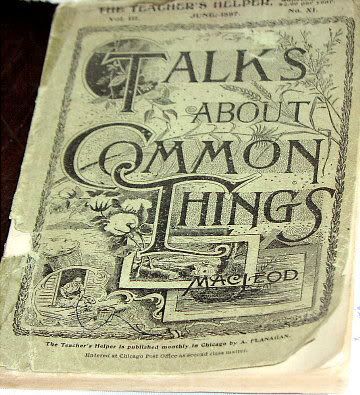
Today brought some lovely treasures from the charity shops, not least among them a little paper-covered booklet called Talks About Common Things, The Teacher's Helper, Vol. III, June, 1897. This little monthly bulletin contains useful facts about such subject as Cotton, Wool, Silk, Flax, Leather, Furs, Feathers, Tea, Coffee, Chocolate, Rice, Salt, Sugar, Bread Grains, Cloves, Pepper, Wood, Cork, Glass, Sponge, Ivory, Bricks, India Rubber, Tobacco, and Paper. In addition, there are blackboard outlines, objects to aid in teaching, and test questions...
Some blue and white embroidered tea napkins hopped into my basket too!

So let's share a cup of tea (or coffee or chocolate) and delve into this antique volume of teacherly information, shall we? The section on Wool is quaint and interesting...
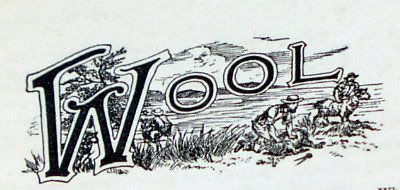
From what source obtained. - The term wool is applied to the fleece of common sheep, such as are found in the mountainous regions of many countries, also to the silky covering of the llama and alpaca, and the fine hair of the Cashmere goat. The llama and alpaca are natives of Peru, and the goat is found in the hilly portions of Tibet and Tartary.
We will first consider the process of changing the covering of common sheep into a useful article of commerce.
The first step. - The first ting to do, is to wash the sheep. In their wandering over the hills, thorns and thistles, and quantities of dust gather in their fleece.
The washing - The sheep are driven into a shallow stream on a warm day in June or July, and thouroughly washed, a process to which they strongly object. The sheep are then allowed to run around in a clean place until their fleece is dry.
The sheering - The fleece is then cut off with large shears.
Appearance of fleece - When examined closely, it is found that this fleece is composed of hairs of different lengths, each hair somewhat curly, and having uneven edges. The irregularity of the edges of these fibers is one of the chief reasons why wool is such an important material of manufacture, The little rough projections which you will find on wool fibres, if you examine then, through a microscope, cause these fibres to attach themselves to each other very firmly.
The sorting - The fleece is carefully sorted, the long hairs being separated from the short ones. Hairs of various lengths are found on a single sheep. The fleece is then cleansed again, for the first washing is not sufficient to remove all impurities.
The wool-comber - Next, to straighten the hairs, and lay them all in the same directions, an iron comb is used, called a wool-comber. It has sharp pointed teeth.
Manufacture - The wool fibres are then spun and woven into cloth, the same kind of machinery being used as in the manufacture of cotton cloth.
Yarn and worsted - Some of the wool is not woven, but after being spun into threads, several threads are twisted to make yarn, which is used for making stockings. When the threads are twisted very firmly, worsted is made, from which so many beautiful fancy articles are fashioned.
The cloth - Woolen cloth as it comes from the loom is very soft and flexible. It is sometimes colored before being woven, but usually is dyed after being made into cloth. Woolen cloth is especially adapted for making clothing to be worn in cold weather.
Where manufactured - France and England manufacture a large quantity of woolen cloth every year. In the New England section of our own country are many mills which produce a very fine grade of goods.
The Llama - This animal is somewhat like a camel in shape, only it has no hump. It is sometimes called the Peruvian camel. Its hair is long and silky and is much used for fringes and ornaments.
The Cashmere Goat - This goat is so called because its hair was first made into beautiful shawls in the city of Cashmere, in India. They are now made also in some parts of France. The outer hair of the animal is stiff and coarse, while under this is a layer of fine silky fleece. The latter is used for the shawls. These shawls are elaborate in design and coloring, and are very expensive.
The Alpaca - This is a smaller animal than the llama, and has a long neck and handsome head. Its wool is long and glossy. The material made of it bears the name alpaca, and retains the silky gloss, particular to the hair of the animal.
Early history of wool - The manufacture of wool into cloth dates back to a very early period in the history of the world. From the Bible we learn of the flocks of sheep which constituted the chief wealth of the patriarchs of olden time. The Hebrews, Greeks, Egyptians and Romans all used clothing woven from this material. Their garments were loose and flowing, and they were particular about the fineness and beauty of the material of which they were made.
~~~~~~~~~~~~~~~~~~~~
That is the end of the lesson! It almost makes me wish I could have been a student of that classroom in the 1800's - although I must say, the section on The wool-comber is quite scary, don't you think? All those "sharp pointed teeth" and no explanation of whether a wool-comber was a person or a thing! I wonder how many children had nightmares of wool-combers hiding under the bed waiting to chomp down with thier big sharp teeth, LOL!
The introduction says that these useful books were prepared by "active, prominent and successful" teachers for their teaching collegues. If I were this teacher, using this lesson, I would bring knitting or crochet into class and let the students see and feel the different kinds of fibers and what they looked like made up.
Thrift store shopping yielded a handful of knitting and crochet booklets, including one on crocheted church laces. Imagine a time when women spend months making lace for the altar of their local parish! I also found a crochet booklet called Dolls and Dolls, for making clothes for the old-fashioned Ginny Dolls and other small fashion dolls that were popular before Barbie came on the scene. I already have this booklet, so I'll be looking for someone to give it to, who would actually use it.
My trip included a stop at a brand new Health Food Store, where I found two new types of tea. One - in teabags only - with cucumber! I love to try unusual teas, and as long as they don't have hibiscus or chamomile in them, am pretty open to all types and flavours. One of my favorites has got to be the Treasures of the Incas tea that a new friend in Canada sent me as a gift. It is a mix of tea and herbs and actually has pieces of carrot in it! This seems to give the tea a rich mellow flavour with no bitterness, as well as having health properties.
Well, all this talk of tea has made me very aware that it's time for my morning tea...an unflavoured Assam, I think, and English muffins with apricot jam...
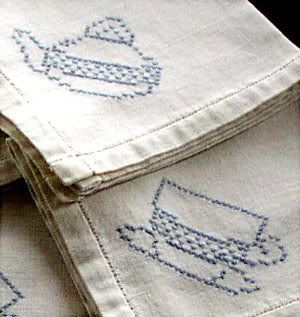













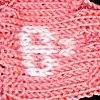

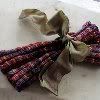

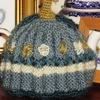



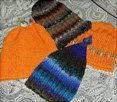



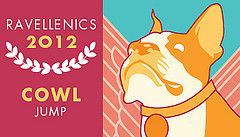
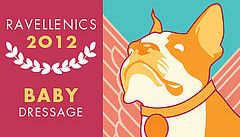
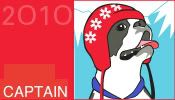
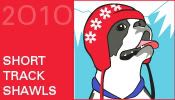




6 comments:
The booklet looks wondeful! I have a book from England published the 1880's, that was a reference manual of sorts. If you think the wool comber is scary you should see some of the things they did to keep their food "fresh" Like painting eggs with gum arabic, and rolling them in charcoal...YUCK!
Thanks for sharing that delightful excerpt from the book. You are lucky to find so many great treasures.
Briley, What is the 1880's book that you have? Is it a "Household Hints" type book? Some of them had knitting as well as household tips and were pretty outrageous!
HI karla - I don't know what it is about this area, but I guess its just so old (settled in the 1700's, which I suppose wouldn't seem old to my European friends but is old to us) that people have tons of stuff to put in the charity shops and antique stores...In a weird way, I'm pretty lucky to be in a low income bracket where I'm scouting out the second hand shops all the time out of necessity, so I find a lot of good stuff...
This is great! Loved to read through that excerpt!
"The first ting to do, is to wash the sheep" - That made me laugh for some reason - felt like making a Ravatar with the text :D
yes, I thought that was funny too! I'd love to see you make it into a Ravatar.
Post a Comment